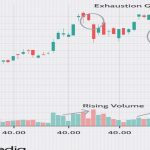When a stock index falls by more than 10%, it is often said to have entered “correction” territory. That’s a fairly neutral term for what feels like a nerve-wracking drop to many investors. What does a correction mean? What’s likely to happen after a correction, and what can you do to help your portfolio weather the downturn? Here are answers to some commonly asked questions:
What is a correction?
There’s no universally accepted definition of a correction, but most people consider a correction to have occurred when a major stock index, such as the S&P 500® index or Dow Jones Industrial Average, declines by more than 10% (but less than 20%) from its most recent peak. It’s called a correction because historically the drop often “corrects” and returns prices to their longer-term trend. Corrections can happen to individual assets, like an individual stock or bond, or to an index measuring a group of assets.
An asset, index, or market may fall into a correction either briefly or for sustained periods—days, weeks, months, or even longer. However, the average market correction is short-lived and lasts anywhere between three and four months.
Investors, traders, and analysts use charting methods to predict and track corrections. Many factors can trigger a correction. From a large-scale macroeconomic shift to problems in a single company’s management plan, the reasons behind a correction are as varied as the stocks, indexes, or markets they affect.
Is it the start of a bear market?
Nobody can predict with any degree of certainty whether a correction will reverse or turn into a bear market. However, historically most corrections haven’t become bear markets (that is, periods when the market falls by 20% or more). There have been 22 market corrections since November 1974, and only four of them became bear markets (which began in 1980, 1987, 2000 and 2007).
(Since 1974, only four market corrections have become bear markets.)
What if it really is the start of a bear market?
No bull market runs forever. While they can be scary, bear markets are a part of long-term investing and can be expected to occur periodically throughout every investor’s lifetime.
However, it’s important to keep them in perspective. Since 1966, the average bear market has lasted roughly 17 months, far shorter than the average bull market. And they often end as abruptly as they began, with a quick rebound that is very difficult to predict. That’s why long-term investors are usually better off staying the course and not pulling money out of the market.
How a Correction Works?
Corrections are like that spider under your bed. You know it is there, lurking, but do not know when it will make its next appearance. While you might lose sleep over that spider, you shouldn’t lose sleep over the possibility of a correction.
The average correction for the S&P 500 lasted only four months and values fell around 13% before recovering. However, it is easy to see why the individual or novice investor may worry about a 10% or greater downward adjustment to the value of their portfolio assets during a correction. They didn’t see it coming and don’t know how long the correction will last. For most investors, in the market for the long term, a correction is only a small pothole on the road to retirement savings. The market will eventually recover, so, they should not panic.
Of course, a dramatic correction that occurs in the course of one trading session can be disastrous for a short-term or day trader and those traders who are extremely leveraged. These traders could see significant losses during times of corrections.
No one can pinpoint when a correction will start, end, or tell how drastic of a drop prices will take until after it’s over. What analysts and investors can do is look at the data of past corrections and plan accordingly.
Charting a Correction
Corrections can sometimes be projected using market analysis, and by comparing one market index to another. Using this method an analyst may discover that an underperforming index may be followed closely by a similar index that is also underperforming. A steady trend of these similarities may be a sign that a market correction is imminent.
Technical analysis review price support and resistance levels to help predict when a reversal or consolidation may turn into a correction. Technical correction happen when an asset or the entire market gets over-inflated. Analysts use charting to track the changes over time in an asset, index, or market. Some of the tools they use include the use of Bollinger Bands, envelope channels, and trend-lines to determine where to expect price support and resistance.
Preparing Investments for a Correction
Before a market correction, individual stocks may be strong or even over-performing. During a correction period, individual assets frequently perform poorly due to adverse market conditions. Corrections can create an ideal time to buy high-value assets at discounted prices. However, investors must still weigh the risks involved with purchases, as they could well see a further decline as the correction continues.
Protecting investments against corrections can be difficult, but doable. To deal with declining equity prices, investors can set stop loss orders or stop limit orders. The former is automatically triggered when a price hits a level pre-set by the investor. However, the transaction may not get executed at that price level if prices are falling fast. The second stop order sets both a specified target price and an outside limit price for the trade. Stop-loss guarantees execution where stop-limit guarantees price. Stop orders should be regularly monitored, to ensure they reflect current market situations and true asset values. Also, many brokers will allow stop orders to expire after a period.
Investing During a Correction
While a correction can affect all equities, it often hits some equities harder than others. Smaller-cap, high-growth stocks in volatile sectors, like technology, tend to react the strongest. Other sectors are more buffered. Consumer staples stocks, for example, tend to be business cycle-proof, as they involve the production or retailing of necessities. So if a correction is caused by, or deepens into, an economic downturn, these stocks still perform.
Diversification also offers protection—if it involves assets that perform in opposition to those being corrected, or those that are influenced by different factors. Bonds and income-vehicles have traditionally been a counterweight to equities, for example. Real or tangible assets, like commodities or real estate—are another option to financial assets like stocks.
Although market corrections can be challenging, and a 10% drop may significantly hurt many investment portfolios, corrections are sometimes considered healthy for both the market and for investors. For the market, corrections can help to readjust and re-calibrate asset valuations that may have become unsustainable high. For investors, corrections can provide both the opportunity to take advantage of discounted asset prices as well as to learn valuable lessons on how rapidly market environments can change.
What is to be done now?
Consider your portfolio and your emotional well-being in case of a significant downturn. Here are some additional steps all investors should consider:
- Have a financial plan.. A written financial plan can help you craft an appropriate investing strategies that potentially could help a balanced portfolio.
- Risk tolerance. It’ is relatively easy to take risks when the market is rising, but market downturns sometimes can be a wake-up call to consider adjusting your target asset allocation. Consider how much loss you have the emotional and financial capacity to handle.
- Re-balance portfolio. Market changes can skew your allocation from its original target. Over time, assets that have gained in value will account for more of your portfolio, while those that have declined will account for less. Re-balancing means selling positions that have become overweight in relation to the rest of your portfolio, and moving the proceeds to positions that have become underweight. It’s a good idea to re-balance at regular intervals.
- Age into consideration. If you’re a younger investor saving for a goal that is 10 or more years away, you have time to potentially recover from a market drop. However, the picture may change for investors nearing retirement.
Financial and Business expert having 30+ Years of vast experience in running successful businesses and managing finance.







